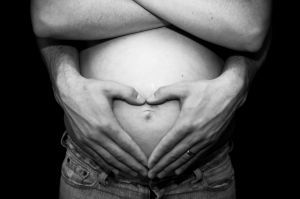At 32 weeks of pregnancy, my blood pressure was elevated and my weight gain was through the roof. The doctor was concerned that I may be suffering from preeclampsia, a deadly condition brought on by pregnancy. Luckily, my body chose to combat preeclampsia by pushing into preterm labor. Despite being given Breathene and Magnesium Sulfate, two medical treatments for preterm labor, my body was ready to give birth and two healthy babies were born 8 weeks early. I managed to slip through the deadly grasp of preeclampsia, but not all women are as lucky.
Preeclampsia is a pregnancy-based condition with only one cure, giving birth. The warning signs and symptoms are, sometimes, easy to spot even without a medical degree, but others require a closer look and a diagnostic eye.
Higher than normal blood pressure is one of the early warning signs. Normal blood pressure is 140/80 or below. Women suffering from preeclampsia often suffer from hypertension, or high blood pressure. If high blood pressure is noted, doctors will often request a second reading to rule out preeclampsia. If the second blood pressure measurement is taken within seven days of the first high reading and the result remains high, the doctor could diagnose preeclampsia.
Women suffering from hypertension may have symptoms such as headache, nausea and chest pain. These symptoms may not appear until blood pressure is in the dangerous zone, which is why high blood pressure is often called “the silent killer.
Trace amounts (or more) of protein in urine. Many pregnant women hate the fact that they must pee in a cup every time they visit the obstetrician. There is a good reason for urine tests throughout pregnancy, one of which is the protein test. Women with preeclampsia expel protein in urine. The urine test at your normal check-up could be the first indication of preeclampsia. If protein is found in the urine, the doctor will closely monitor the pregnancy for the remaining weeks of gestation. There are no physical symptoms of protein in urine.
Faster than normal weight gain. Women gain weight throughout pregnancy, but fast weight gain is an indication of preeclampsia. If a pregnant woman gains more than two pounds in one week, the doctor may place a precautionary red flag on the medical file. Weight gain will be tracked closely, along with other potential signs of preeclampsia.
It is important for women to be open with their obstetricians. If you know you have been eating a half gallon of ice cream every night before bed, tell the obstetrician. Women pregnant with multiples tend to gain weight faster than women pregnant with singlets, so gauging preeclampsia risk by weight gain, in the case of multiples, is nearly impossible.
Severe swelling of the face and hands may be a preeclampsia symptom…or not. Swelling and edema are common during pregnancy. Swelling is caused by increased fluid retention as is edema. Women who suffer from preeclampsia may show signs of severe swelling and/or edema with pitting. Pitting is when there is so much fluid directly under the skin that an indentation made with a finger slowly refills with fluid instead of rebounding back immediately. Unfortunately, all pregnant women swell, so this is often considered an unreliable symptom.
Preeclampsia can lead to increased risk of premature labor, infant mortality and maternal mortality. Doctors often keep a close eye on patients in the latter stage of pregnancy for warning signs and symptoms of the condition. So, the next time you head into the obstetrician’s office, don’t worry about standing on the scale, peeing in a cup or having your blood pressure taken. These are all diagnostic measures to ensure mom and baby are safe and sound.
More from Summer on Pregnancy
How Will Ehler Danlos Affect My Pregnancy?
Vaccination Guidelines for Pregnant Women
Obese Women, Rise in Gestational Diabetes: Dieting While Pregnant



